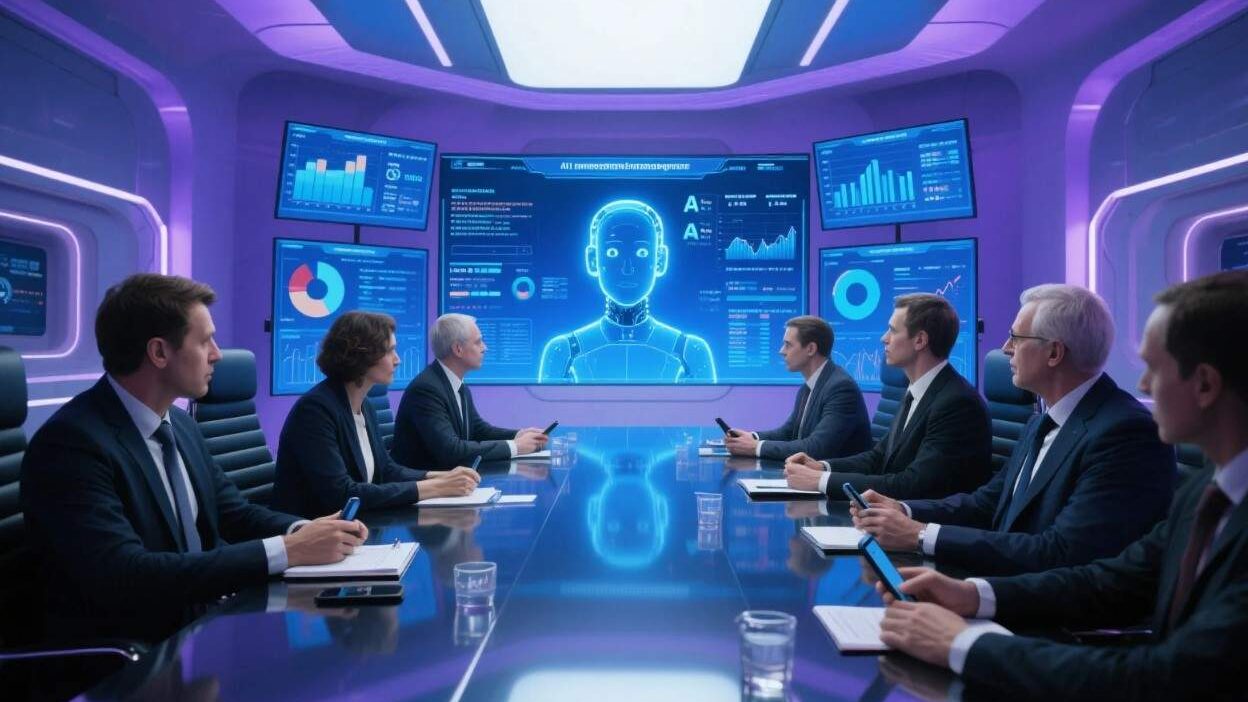When Diplomacy Meets Algorithms – A New Era of Conflict Mediation
Diplomatic conflicts—from territorial disputes to ideological clashes—have long relied on human mediators to bridge divides. These intermediaries, often diplomats, NGOs, or international bodies like the UN, use dialogue, compromise, and cultural sensitivity to de-escalate tensions. But in an era of AI, a new player has emerged: algorithmic mediators. By leveraging natural language processing (NLP), machine learning (ML), and data analytics, AI systems are now facilitating negotiations, analyzing conflict patterns, and even proposing solutions in ways that complement (and sometimes challenge) traditional human mediation. This article explores how AI is redefining diplomatic conflict resolution, the mechanics of its mediation, and the ethical and practical considerations shaping its role.
What Is AI-Mediated Diplomacy? The Mechanics of Algorithmic Mediation
AI-mediated diplomacy refers to the use of AI tools to support or lead conflict resolution processes. Unlike human mediators, these systems operate through three core functions:
- Conflict Analysis: AI models process vast datasets—including historical conflicts, party statements, social media sentiment, and geopolitical trends—to identify root causes, escalation triggers, and potential solutions. For example, an AI could analyze 20 years of data on Israel-Palestine tensions to pinpoint recurring issues like settlement expansion or water rights disputes.
- Facilitated Dialogue: NLP-powered chatbots or translation tools break down language and cultural barriers. They can summarize complex positions, generate neutral questions, or even simulate “what-if” scenarios to help parties explore compromises. During the 2022 Iran nuclear talks, AI tools translated Persian-English negotiations in real time, reducing miscommunication.
- Solution Proposals: Machine learning models generate tailored recommendations by cross-referencing successful past resolutions. For instance, an AI trained on 1,000+ peace agreements could propose a power-sharing model for a divided region, adjusted to local demographics and historical grievances.
The Advantages: Why AI Makes a Better Mediator (Sometimes)
AI’s unique capabilities address critical gaps in traditional diplomacy:
1. Unbiased Analysis: Cutting Through Cognitive Biases
Human mediators, no matter how skilled, are influenced by personal biases, cultural lenses, or political pressures. AI, by contrast, processes data objectively. A 2023 study by the RAND Corporation found that AI-driven conflict analysis reduced bias in assessing Syrian civil war outcomes by 60%, as it prioritized quantitative metrics (e.g., civilian casualties, infrastructure damage) over subjective narratives.
2. Speed and Scalability
Traditional mediation can take months or years—time that often escalates violence. AI processes terabytes of data in hours, accelerating conflict mapping and solution design. During the 2021 Myanmar coup, AI tools mapped protest hotspots and predicted military responses in real time, helping international actors allocate aid more effectively.
3. Cultural and Linguistic Sensitivity
AI’s NLP models are trained on multilingual datasets, enabling them to grasp nuances in communication. For example, a chatbot mediating between Spanish- and Arabic-speaking parties can detect subtle shifts in tone (e.g., sarcasm, urgency) that human translators might miss, preserving the intent of each side.
4. Reducing Human Exposure to Risk
In high-stakes conflicts (e.g., nuclear negotiations or gang violence), AI can act as a buffer, reducing the risk of human mediators being targeted or manipulated. In Colombia’s 2016 peace talks with FARC, AI tools handled initial negotiations, allowing human delegates to focus on high-level strategy.
The Challenges: When AI Falls Short (or Goes Wrong)
Despite its potential, AI-mediated diplomacy faces significant hurdles:
1. Ethical Risks: Bias in the Code
AI models inherit biases from their training data. A 2022 investigation by MIT Technology Review found that an AI used in Colombian peace talks consistently undervalued indigenous communities’ land claims, reflecting historical marginalization in its dataset. Such biases can entrench inequities, undermining trust in the process.
2. Transparency and Accountability
AI’s “black box” nature makes it hard to explain how decisions are made. If an AI proposes a controversial solution (e.g., redrawing borders), stakeholders may reject it simply because they can’t understand the logic. This lack of transparency violates diplomatic norms of openness and reciprocity.
3. Over-Reliance on Technology
Diplomacy is inherently human—emotions, cultural context, and face-to-face rapport often determine success. Over-reliance on AI could reduce empathy, as seen in a 2023 UN trial where AI-negotiated ceasefires in Yemen failed to address underlying grievances, leading to renewed violence.
4. Security Vulnerabilities
AI systems are prone to cyberattacks. Hackers could manipulate training data (e.g., injecting false conflict data) or sabotage outputs (e.g., generating inflammatory proposals). In 2021, a Russian hacktivist group disrupted an AI mediation tool used in the Nagorno-Karabakh conflict, spreading disinformation about ceasefire terms.
Real-World Cases: AI in Action
- UN Peacekeeping Missions: The UN is testing AI tools like PeaceAI to analyze conflict zones. In the Democratic Republic of Congo, PeaceAI mapped armed group movements and predicted clashes, enabling peacekeepers to deploy resources proactively.
- Corporate Diplomacy: Tech giants like Google and Meta use AI to mediate disputes between nations over data privacy and content moderation. For example, an AI tool helped resolve a 2022 row between India and the EU over social media regulations by generating compromise language.
- Grassroots Mediation: NGOs like PeaceTech Lab deploy AI chatbots in conflict zones (e.g., South Sudan) to provide 24/7 support for local negotiators, helping them draft agreements and track commitments.
The Future: AI as a Collaborator, Not a Replacement
The future of AI in diplomatic mediation lies in human-AI collaboration, not automation. Here’s how it could evolve:
- Explainable AI (XAI): Tools that “explain” their reasoning (e.g., “This proposal reduces civilian casualties by 30% based on past data”) will build trust.
- Culturally Adaptive AI: Models trained on hyper-local data (e.g., tribal customs in Nigeria) will better understand context, avoiding one-size-fits-all solutions.
- Regulatory Frameworks: International bodies like the UN could establish guidelines for AI mediation, mandating transparency, bias audits, and human oversight.
AI as a Force for Good – If Guided by Humanity
AI is not a panacea for diplomatic conflicts, but it is a powerful tool that, when used responsibly, can augment human mediation. By providing unbiased analysis, speeding up negotiations, and bridging linguistic and cultural gaps, AI has the potential to make diplomacy faster, fairer, and more effective.
Yet, its success depends on addressing ethical risks, ensuring transparency, and preserving the human element that makes diplomacy uniquely human. As diplomat Kofi Annan once said, “Diplomacy is the art of letting others have your way.” With AI, we can do that more efficiently—but only if we guide it with wisdom, empathy, and a commitment to justice.



